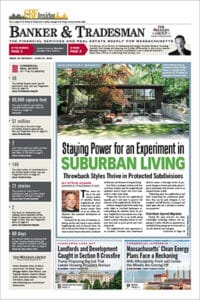Scott Bailey wants you to mind the gap. The mover gap, that is.
The executive vice president of strategy and analytics at Target Data, which specializes in pre-mover marketing, is pitching predictive modeling to banks hoping to hold onto customers who might slip through the cracks when they move.
“Any time there’s a major life event change, that can signal a time when you might need to change something about your finances,” said Bailey. “It’s a great time for banks to talk to you, and it’s an even better time for a bank to recognize that a customer put their home up for sale and reach out to them.”
Target Data specializes in movers or pre-movers, in a way. As Bailey explains it, when a person is getting ready to move, he or she is essentially making a major life change and may be more open to considering new brands or purchases than he or she ordinarily would. Plenty of industries have a vested interest in movers – Internet and cable providers, insurance companies, appliance manufacturers, for example – and banks are no different, Bailey said.
With Target Data’s help, Bailey said, bankers can cross-reference addresses recently listed for sale against their customers’ addresses to find out who is moving and then act accordingly. So for example, you might reach out to those customers to let them know of the nearest branch to their new home, or you might market a new mortgage product to those customers.
Bailey likened it to driving past a customer’s house and noticing a “For Sale” sign on your way into work – only on a much grander scale.
“It’s a really excellent opportunity for a bank of any size to reach out to its customers and say, what can we do to help?” Bailey said.
‘Brilliant Tool’
But while Eric Morse, first vice president at Needham Bank, called predictive modeling “a brilliant tool,” he also pointed out a considerable downside to the technology: “It’s relatively expensive to develop a predictive model for your own database. Each one is different and it varies by bank.”
Accordingly, the practice is more popular among the bigger banks that can shell out for it.
So faced with slim margins and small staff, community banks typically do what they’ve always done: They get creative and they put boots on the ground.
It’s not uncommon, for example, to see a small-town community bank participating in the “welcome wagon" that greets a newcomer or sending out mailers to newly purchased homes, enticing the new occupants to come in for a visit.
“When you’re a small bank and somebody moves out of our geography, it’s unlikely we will keep them,” Hal Tovin, chief operating officer at Belmont Savings Bank, conceded. “We focus on those moving into our geography. It’s the flipside of what big banks are trying to prevent.”
One tactic Belmont employs is its “60 Minute Switch,” wherein the bank promises to help the customer switch banks in an hour’s time or less, or pay the customer $60.
Nobody has asked for the $60 yet, Tovin said, but it’s helped knock down the perception that switching banks has to be a torturous and time-consuming task.
But as Morse pointed out earlier, every bank is different, and he said Needham Bank takes a different approach.
“Our experience is that by the time people move, they’ve already selected a bank, so we direct market to people who come to us for a new mortgage or to refinance an existing mortgage,” he said.
Morse explained, “When someone is speaking to a lender about a mortgage, there are a number of conversations that have to happen. Very often, the conversation turns to “Where do you bank and why?”
Still other banks, like First Trade Union Bank headquartered in Boston’s Seaport District, have sunk more time and resources into increasing their digital channels, which is particularly important for a bank that has only three physical locations.
And with a suite of digital channels that includes mobile deposit and a LevelUp payment application, Chris Tremont, First Trade’s director of marketing, said the bank has customers across all 50 states.
“It kind of redefines what it means to be a community bank when your community becomes a virtual space,” Tremont said. “Through the power of the Internet and financial blogs and the like, we’ve attracted clients from all over the country. I’m pretty sure we have somebody down in Hawaii who banks with us.”
Email: lalix@thewarrengroup.com






